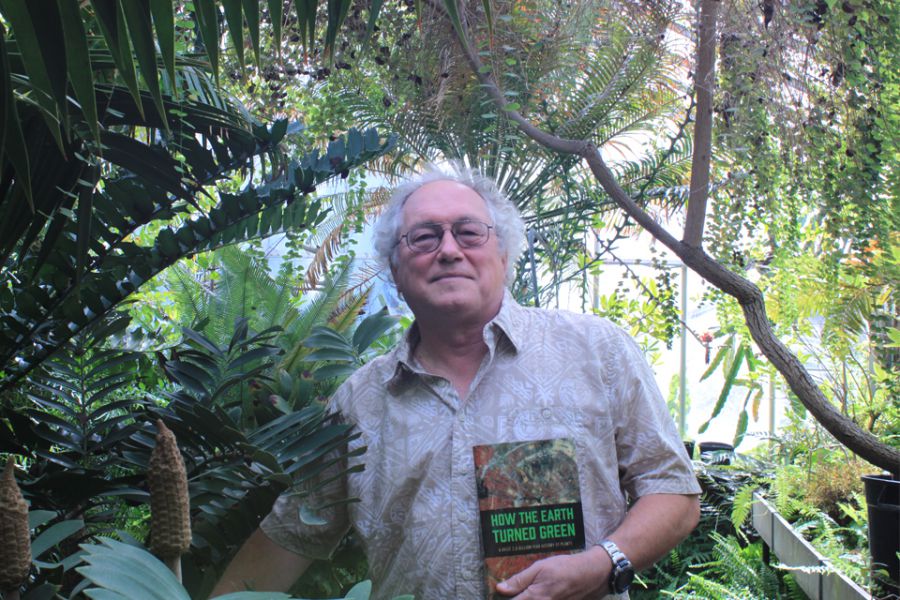The tale of how the Earth’s plants became green sounds a bit like a promo for a horror movie….
[Insert narrator’s deep voice] In a dark world, a mutant will rise. One so powerful that even when consumed, it will spread its need for the light of a star to live, thrive, and survive. Cyanobacteria, coming to a planet near you….
“This is a good story, as good of a scientific story as the Earth has,” said Illinois State University’s Professor of Botany Joe Armstrong. His new book, How the Earth Turned Green: A Brief 3.5 Billion-Year History of Plants delves into the ancient history of plants on the planet, and how they evolved into the diversity of green life that covers the globe today.
 The book talks about the shift millions of years ago from older bacteria to the blue-green that is now pervasive. “The most common bacteria actually reflected light so that it appeared kind of purple,” said Armstrong, who has been an expert in plant diversity for more than 40 years.
The book talks about the shift millions of years ago from older bacteria to the blue-green that is now pervasive. “The most common bacteria actually reflected light so that it appeared kind of purple,” said Armstrong, who has been an expert in plant diversity for more than 40 years.
As beings on the planet are wont to do, a mutant version appeared that tended to do things in a more snazzy way. “Some bacteria stumbled upon chlorophyll kind of as a variation,” he said, noting chlorophyll is more efficient because it absorbs more of the visible light spectrum. “So the guys who get access to more energy are the type we call blue-green. In the old days, they used to call them blue-green algae, but they’re really blue-green bacteria. More formally, they are cyanobacteria.” Cyanobacteria was so efficient that even when predatory bacteria consumed it, the predator would take on the ability to produce chlorophyll.
The conquest by cyanobacteria is just one part of the story Armstrong tells in How the Earth Turned Green. With chapters that contain titles such as “The Pioneer Spirit” that talks about mosses, and “A Cretaceous Takeover” that explores the domination of flowering plants, Armstrong aimed to relay the story of plant diversity in a new way.
“It’s not designed to be a textbook, it’s a narrative. One of the most compelling narratives our planet has,” said Armstrong. “The funny thing is, I keep hearing from teachers and colleagues that they are using it in their classes, because there are no books that talk primarily about the idea of plant diversity.”
Armstrong is used to being a rebel of sorts. Growing up in Upstate New York, he decided to forego his family’s blue-collar traditions to become the first to earn a college degree at the State University of New York in Oswego. With his youth spent surrounded by plant life, he found himself sketching plants as he majored in botany and minored in art. In fact, several of the illustrations in How the Earth Turned Green are from the author.
A faculty member at Illinois State for more than 35 years, Armstrong is now the caretaker of the George S. Vasey Herbarium, located at Illinois State’s Laboratory for Plant Identification and Conservation. Boasting more than 50,000 plant specimens, it remains the perfect haunt for a man who dedicated his life to understating how plants evolve and change. “Billions of years can seem a little intimidating, but the book is really my approach to the subject. A way to say, here it is.”

